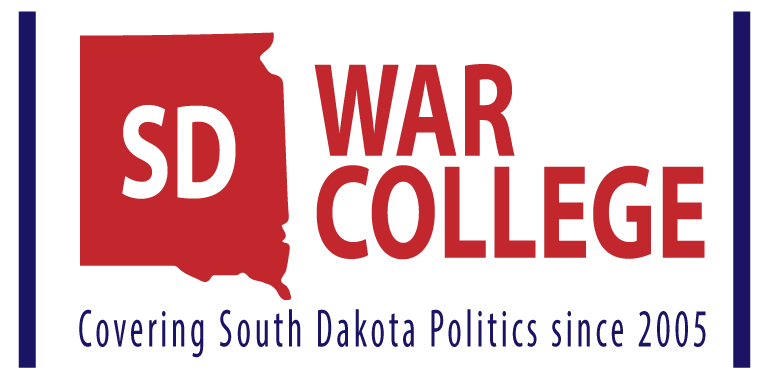Delegation Urges USDA to Reevaluate Selection Process for General CRP Sign-Ups
“We are very concerned that with CRP’s dwindling enrollment and loss of general CRP enrollment acres in South Dakota, our state will suffer damaging setbacks …”
WASHINGTON — U.S. Sens. John Thune (R-S.D.) and Mike Rounds (R-S.D.) and U.S. Rep. Kristi Noem (R-S.D.) today urged U.S. Department of Agriculture (USDA) Secretary Tom Vilsack to reevaluate the selection process for the general Conservation Reserve Program (CRP) sign-ups. The results of the 49th annual general CRP sign-up, which was conducted December 1, 2015, through February 26, 2016, were recently released, and although 727 South Dakota applications for more than 42,000 acres were submitted under the general CRP sign-up, only 101 acres were accepted by USDA.
“Drastically restricting the number of general CRP contract enrollment acres in our state removes the option for most expiring large landscape CRP contract acres from being reenrolled in CRP,” the delegation wrote. “And as a result, because they are denied the option to enroll in general CRP contracts, tens of thousands of acres of marginal land in expiring CRP contracts will be returned to crop production, resulting in higher costs to taxpayers due to increased commodity crop base acres and payments, and increased crop insurance subsidy and indemnity payments. In addition, South Dakota’s already shrinking grassland landscape will dwindle at an accelerated pace.”
Thune, Rounds, and Noem also requested that in the absence of a general CRP enrollment in South Dakota, USDA allocate sufficient continuous CRP acres in a timely manner when needed and requested.
While the delegation acknowledges that USDA has accepted more than 37,000 acres in continuous CRP practices effective at the beginning of 2017, they point out that large landscape contracts enrolled under general CRP sign-ups are critically important for reenrollment of expiring contracts and for maximizing CRP’s usefulness in South Dakota.
Full text of the letter can be found below:
Secretary Tom Vilsack
U.S. Department of Agriculture
1400 Independence Ave., SW
Washington, D.C. 20250
Dear Secretary Vilsack:
We are writing regarding the recently announced results of the 49th general Conservation Reserve Program (CRP) sign-up conducted December 1, 2015, through February 26, 2016. CRP has played a key role in South Dakota’s landscape, outdoor recreation, land stewardship efforts, and economy. However, we are very concerned that with CRP’s dwindling enrollment and loss of general CRP enrollment acres in South Dakota our state will suffer damaging setbacks in these critical areas.
South Dakota landowner interest in CRP remains at very high levels as evidenced by the 727 applications for more than 42,000 acres in the 49th sign-up by South Dakota landowners. However, we are very disappointed that for South Dakota only two CRP offers totaling 101 acres were accepted in the 49th general sign-up.
We appreciate that for fiscal year 2017 more than 37,000 acres have been accepted in continuous CRP in South Dakota as well as more than 18,600 acres in the Grasslands CRP initiative. However, we point out that acreage enrolled under general CRP sign-ups are larger landscape contracts that provide greater environmental and wildlife benefits than continuous CRP practices. In particular, larger acreage general CRP tracts play a critical role in support of South Dakota’s economically significant and treasured pheasant hunting heritage by supporting nesting pheasant needs.
Drastically restricting the number of general CRP contract enrollment acres in our state removes the option for most expiring large landscape CRP contract acres from being reenrolled in CRP. And as a result, because they are denied the option to enroll in general CRP contracts, tens of thousands of acres of marginal land in expiring CRP contracts will be returned to crop production, resulting in higher costs to taxpayers due to increased commodity crop base acres and payments, and increased crop insurance subsidy and indemnity payments. In addition, South Dakota’s already shrinking grassland landscape will dwindle at an accelerated pace.
We request that you reassess the selection process for general CRP sign-ups. It is imperative that each state’s cadre of CRP initiatives and programs that focus on and have successfully addressed specific environmental and wildlife needs remain balanced. An action such as the elimination of the 49th general CRP sign-up enrollment in our state leaves a significant void in CRP’s effectiveness.
We also request that in the absence of a general CRP enrollment in South Dakota that you timely allocate sufficient continuous CRP acres when needed and requested.
Please consider our requests so CRP can continue to successfully function in its key role as a land stewardship tool that protects South Dakota’s marginal land, water, and wildlife.
Sincerely,
John Thune
U.S. Senator
Mike Rounds
U.S. Senator
Kristi Noem
Member of Congress
###











 “I support the fiercely principled and moral US senator, Bernie Sanders, who has staked his entire adult life fighting for the interests of the American people regardless of race, religion, or economic status.”
“I support the fiercely principled and moral US senator, Bernie Sanders, who has staked his entire adult life fighting for the interests of the American people regardless of race, religion, or economic status.”
 Thune, Colleagues Pressure CME to Reassess and Delay Proposed Price Change for South Dakota Live Cattle Delivery Point
Thune, Colleagues Pressure CME to Reassess and Delay Proposed Price Change for South Dakota Live Cattle Delivery Point